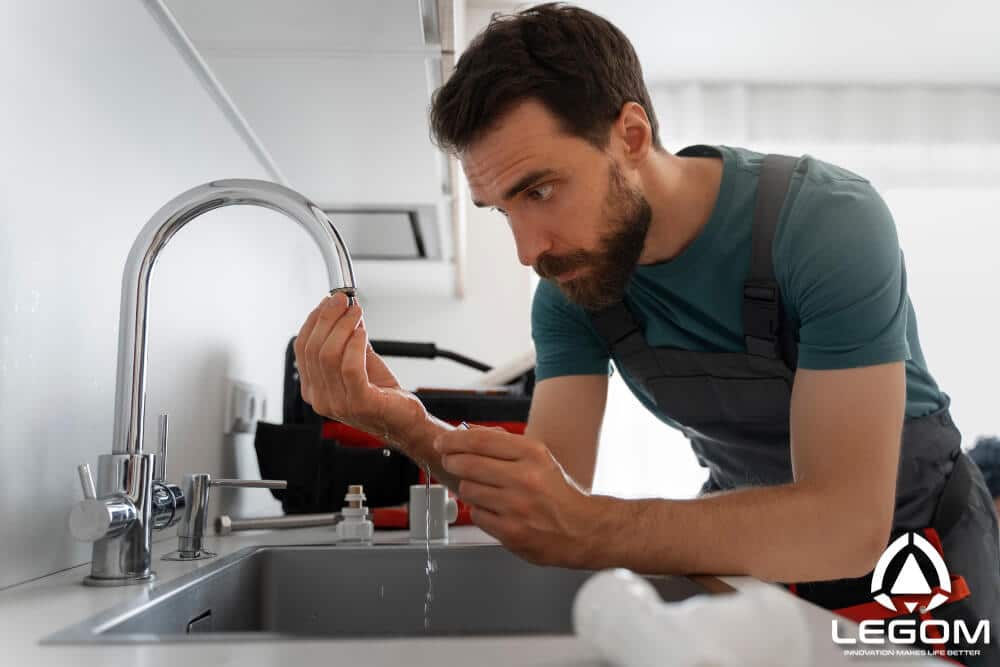Faucet and fixture installation might not be as difficult as you think, especially if you’re already familiar with plumbing work, drilling, and measuring. With the right equipment and skills, you can install shower faucets, sinks, bathtubs, and even replace non-functional faucets.
If you’re proficient with adequate expertise, the installation process won’t take long. Your skill level will determine the success of the faucet installation and how long it will take. If you’re still an amateur and relying heavily on video tutorials, you might spend half a day or even an entire day just installing a sink or bathtub faucet. However, if the task feels overwhelming, it’s best to call a professional plumber.
Replacing old equipment like faucets and fixtures often seems simple at first. But when you start considering all the steps involved, you may begin to doubt your ability to do it yourself. Every faucet installation and repair has its own standards. When a plumber handles it, they ensure that every bathroom fixture meets those standards, preventing leaks and pipe damage that could affect water flow.
Contents
How Do Plumbers Handle Bathroom Faucet and Fixture Installation?
Plumbers typically work on faucet and fixture installations for bathtubs, showerheads, and sinks in both residential and commercial settings. Sometimes, they simply replace an existing fixture, but they are also equipped to replace valves or install entirely new systems.
Here’s how plumbers usually replace showerheads, and bathtub or sink faucets:
Turn Off the Water
This is the first step before working on any pipes or supply lines.
Remove the Old Faucet
The plumber will remove the old shower faucet to access the valve.
Remove the Old Valve
The old valve is removed to install a new one. This task takes longer if there’s no access panel to the valve behind the shower wall, as the plumber may need to drill to locate the valve before placing it in the wall and connecting it to the supply lines.
Bathtub Faucet
Plumbers use a pipe wrench to unscrew the old nipple. If the nipple is too short, they use an internal pipe wrench and a regular wrench.
Setting the Depth
After installing the new valve, the plumber sets it to the correct depth in the wall. A team member tests for leaks by turning off the tub faucet or showerhead while the water supply valve is on. Once no leaks are detected, the plumber patches the wall. The final step is to install the shower cartridge.
Pitfalls to Avoid in Faucet and Fixture Installation
Even if you’ve hired a professional plumber for faucet and fixture installation, you should still check to ensure that everything is done correctly.
Not Turning Off Both Main Faucets Completely
Be sure to turn off the water flow from both main faucets until no water comes out when turned on. Failing to do so can cause high-pressure water to spray everywhere, leading to a messy situation. After shutting off the water, open a faucet briefly to release pressure in the pipes. Also, cover the sink drain with a cloth to catch any sudden water gushes.
Overtightening Connections
Connections should be tightened properly to prevent leaks, but overtightening locknuts and supply lines can crack plastic connections and damage compression joints. Tighten them just enough, using pliers for a gentle turn while supporting connections with a wrench. The connections should be snug but not overly tight, and the plumber should check them multiple times to ensure a successful installation.
Using the Wrong Tools
Plumbers only need a few specific tools for faucet and fixture installation. Using the right tools greatly increases the chances of a successful installation and customer satisfaction. However, even experienced plumbers can make mistakes. As a homeowner, you might want to check and remind them if you notice they’re using the wrong tools.
Essential tools include wrenches, Phillips screwdrivers, flathead screwdrivers, pliers, and a flashlight. Safety glasses are necessary to protect their eyes from debris when removing the old faucet. A sink wrench is needed to reach under the sink and loosen the nuts holding the faucet in place. Plumber’s tape should be applied to threaded connections to create a watertight seal and prevent leaks. Groove joint pliers are used to loosen old supply lines or tighten new ones. Additionally, plumbers need silicone caulk to seal the faucet base to the sink and Teflon tape to wrap around pipe threads before installing the supply line adapter to prevent leaks.
Conculsion
Faucet and fixture installation is often necessary when there’s serious damage. However, you can avoid frequent replacements by using quality products from Legom. We produce and supply various types of faucets to suit your needs, and our superior components can enhance your fixture installation.
You can purchase our products anytime without a minimum order. We offer quality that ensures a more peaceful life, with fewer plumbing and faucet issues.

